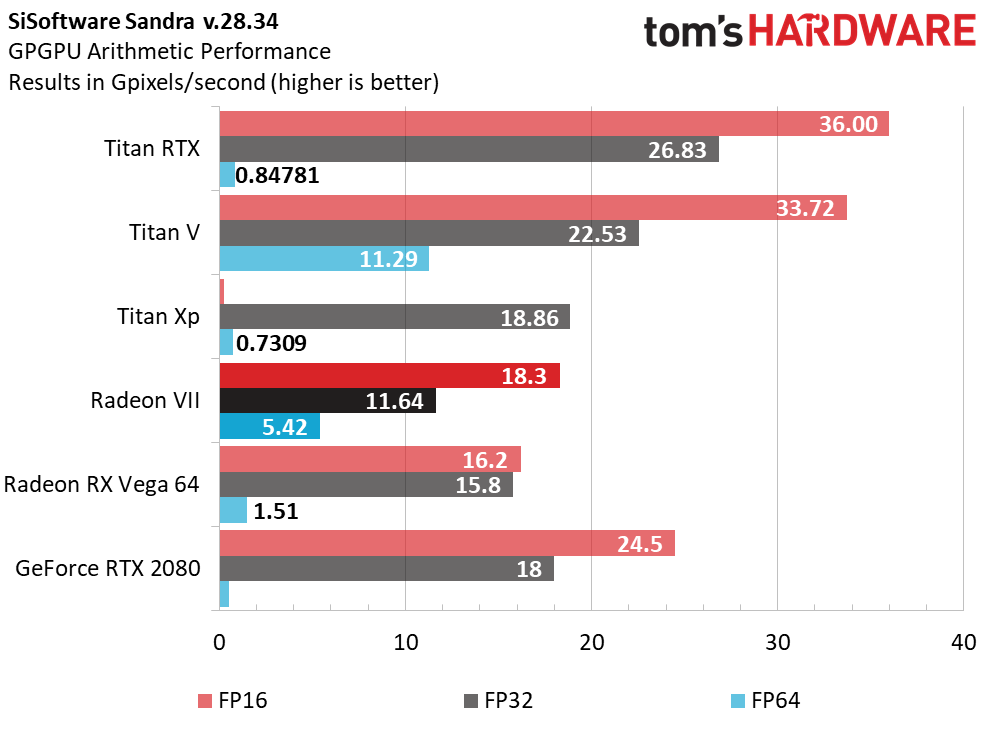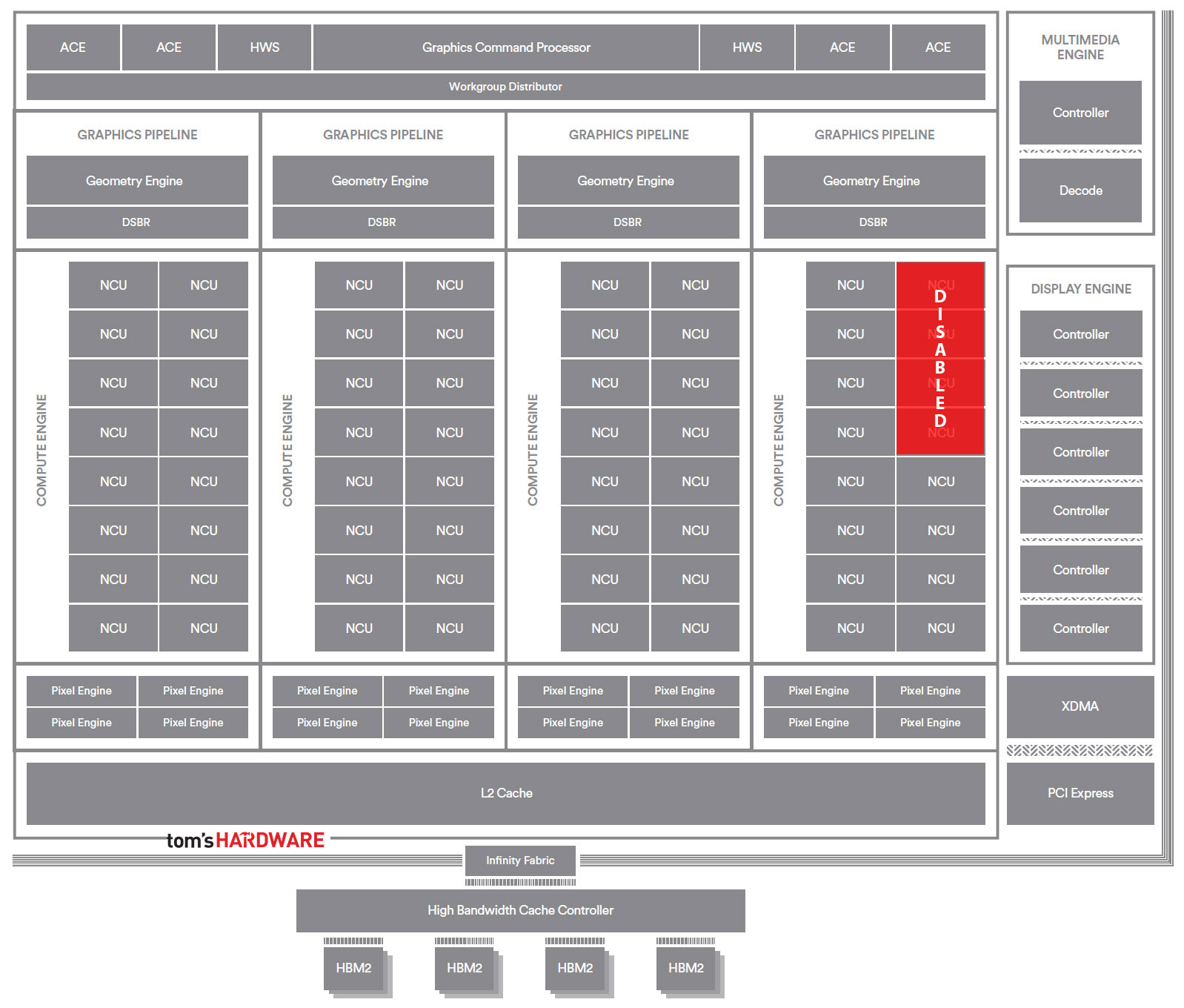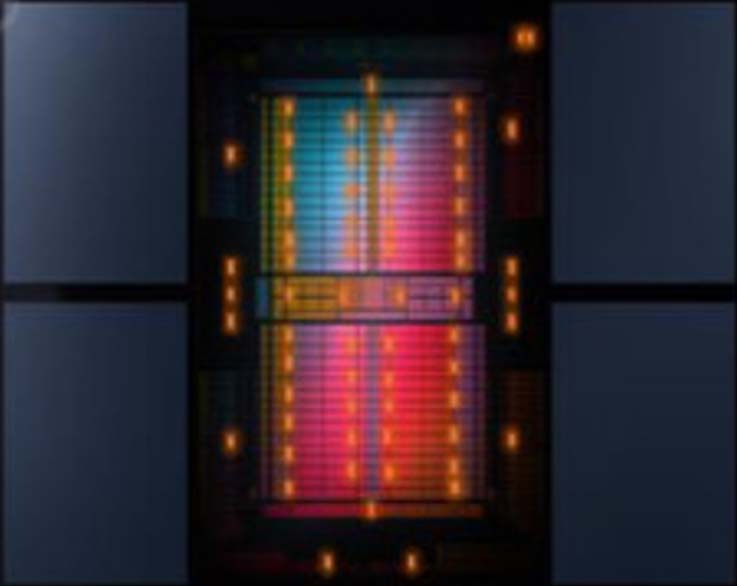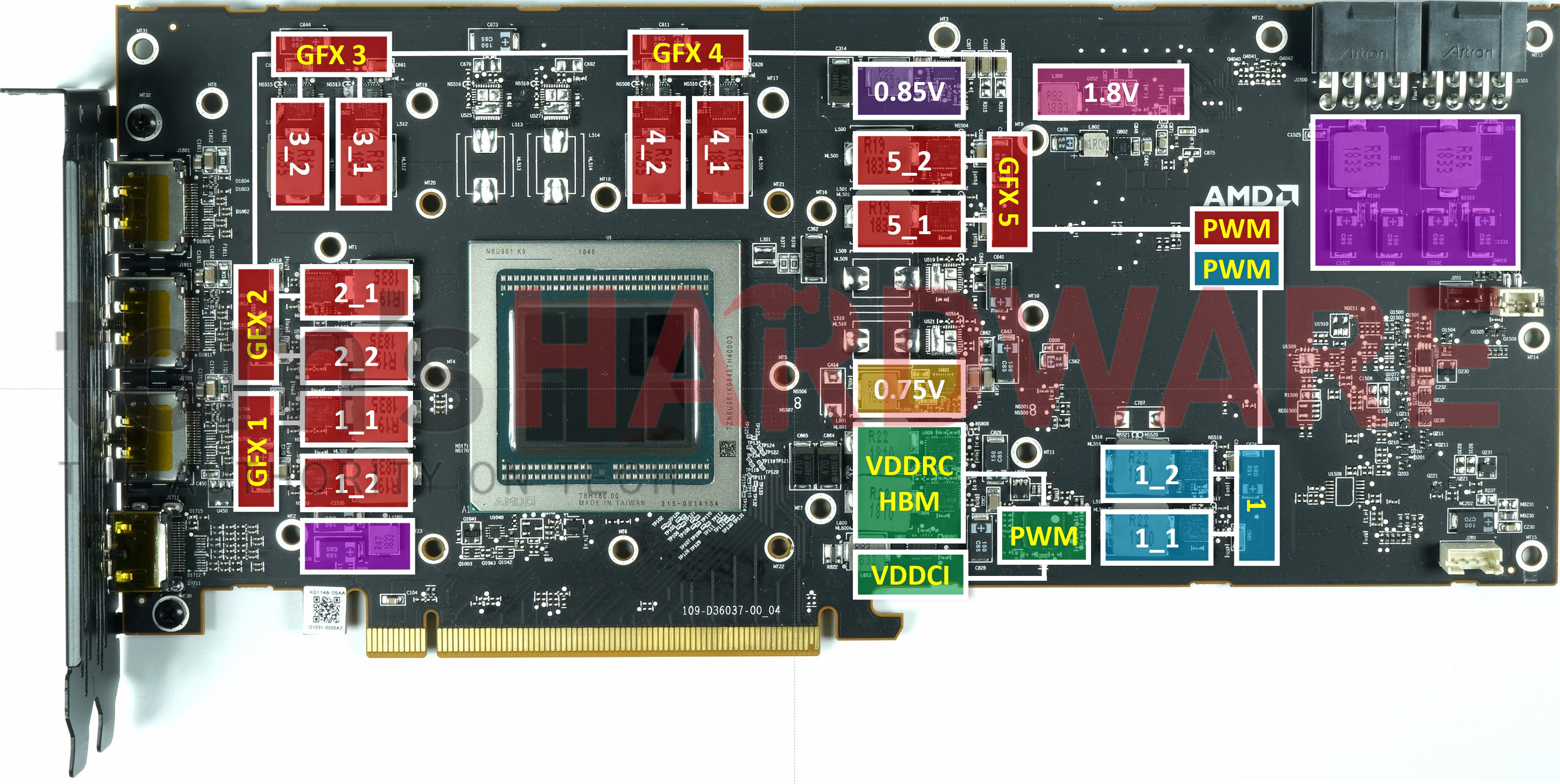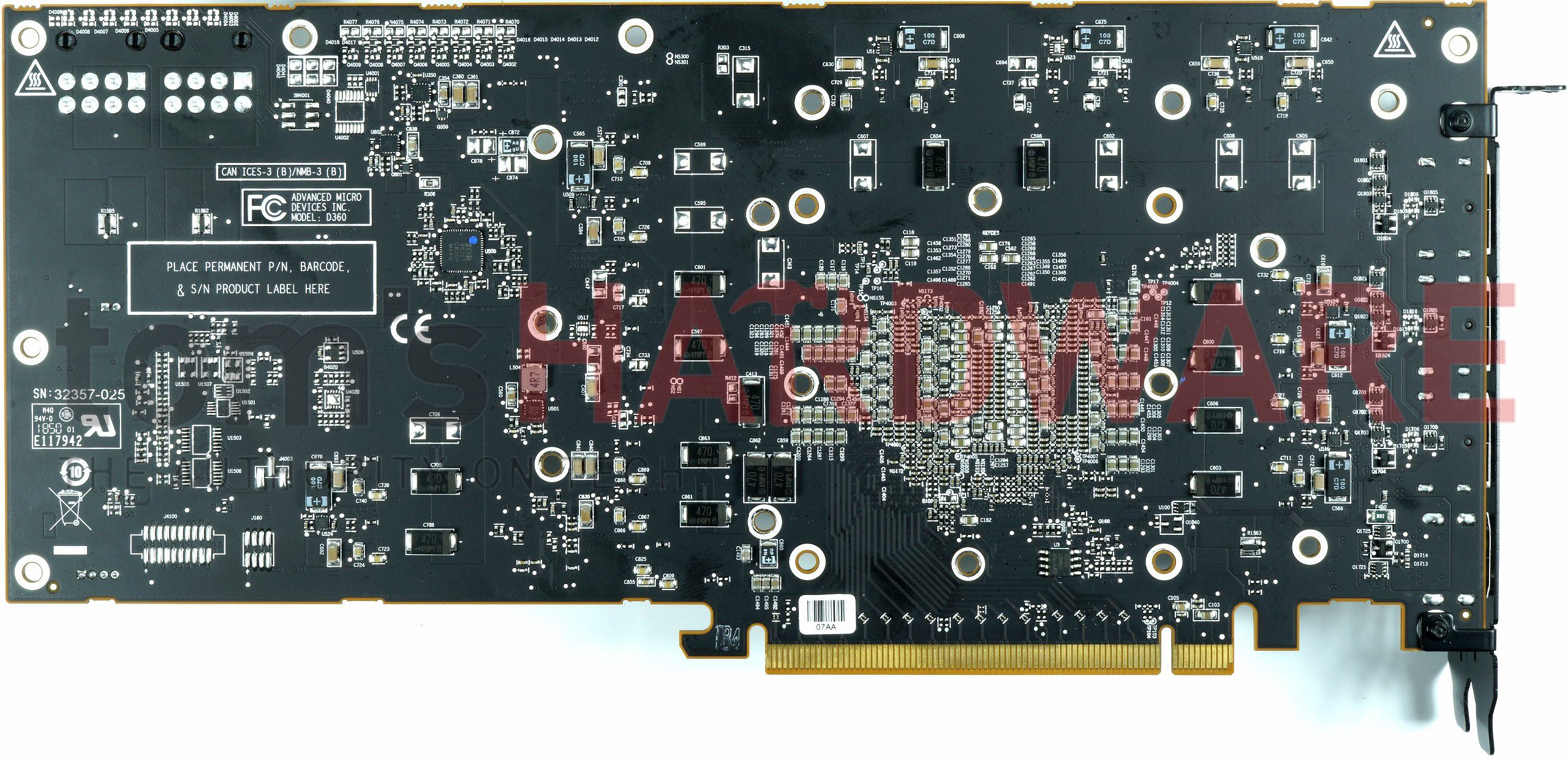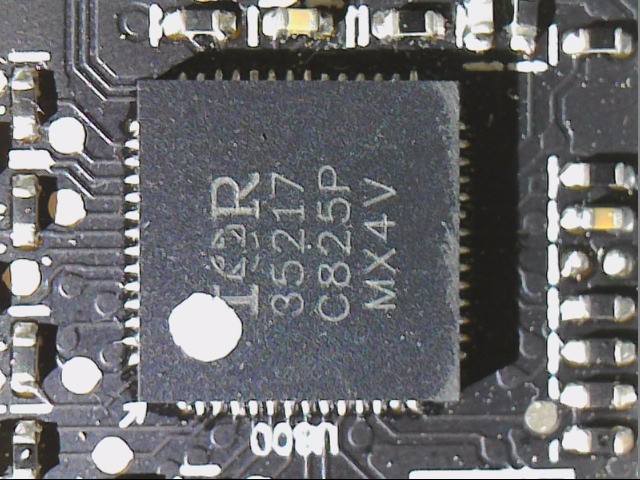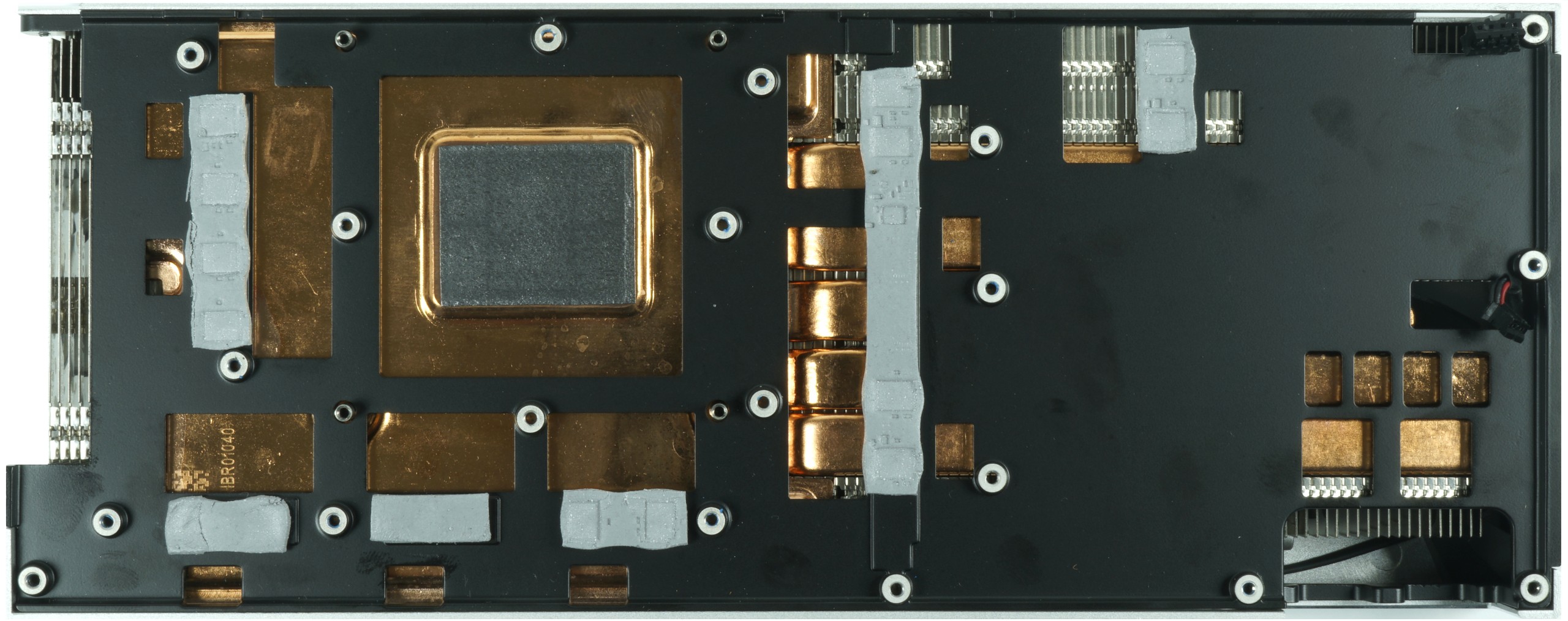Tom's Hardware Verdict
We're glad to see AMD launching a high-end gaming graphics card capable of contending with GeForce RTX 2080. Its 16GB of HBM2 convey big benefits in gaming and content creation workloads alike, and a three-game bundle adds value above and beyond Radeon VII's $700 price tag. But we'd like to see a lower price, particularly given similar performance as the GeForce in today's titles and no provisions for real-time ray tracing in future games.
Pros
- +
Great performance at 2560 x 1440 with maximum quality
- +
Great at 4K with dialed-back detail settings
- +
16GB of HBM2 ideal for memory-intensive workloads
- +
Three-game bundle adds substantial value
Cons
- -
Performance slightly lags GeForce RTX 2080 at same price
- -
Extremely loud under load
- -
Inelegant fan curve
Why you can trust Tom's Hardware
AMD Radeon VII 16GB Review
A lopsided graphics market is no good for enthusiasts. Nvidia’s Turing-based cards proved this by serving up solid performance, but simultaneously turning many gamers off with steep prices. It was only when the company worked its way down to GeForce RTX 2060 and had to compete against Radeon RX Vega 56/64 that it got serious about telling a more compelling value story.
And there was nothing we could do. After all, GeForce RTX 2080 Ti was (and still is) the best card out there for 4K gaming. GeForce RTX 2080 couldn’t be touched by anything in AMD’s line-up, either. Even GeForce RTX 2070 flaunted an advantage over Radeon RX Vega 64 across our benchmark suite.
For all we know, AMD was just as surprised by Nvidia’s hubris as we were. By launching faster cards at higher price points, Nvidia failed to give its customers more for less. Sure, we have real-time ray tracing and DLSS to look forward to. But in today’s games, high-end Turing challenges you to pay a similar price for familiar performance.
Originally, it sounded like AMD would use its 7nm Vega 20 GPUs to shore up favor with customers able to benefit from the architecture’s formidable compute potential. But someone at the company must have smelled blood in the water, deciding that a Vega 20 processor with some of its on-die resources disabled could still be fast enough to counter GeForce RTX 2080 at a similar price point.
Enter Radeon VII, a card that looks a lot like the Radeon Instinct MI50 with some strategic tweaks to prevent cannibalization of the datacenter-oriented model. It does, in fact, take aim at GeForce RTX 2080, and AMD similarly seeks to sell Radeon VII for $700. But Vega 20 lacks the functionality to match Nvidia’s RT and Tensor cores, the Turing architecture’s future-looking features that enable real-time ray tracing and Deep Learning Super Sampling. Instead, AMD is pushing this card’s 16GB of HBM2 and massive 1 TB/s of memory bandwidth as the keys to smooth performance at high resolutions.
Meet Vega 20: Borrowed from the Data Center, Tuned for Enthusiasts
Under the hood, AMD’s Vega 20 graphics processor looks a lot like the Vega 10 powering Radeon RX Vega 64. But a shift from 14nm manufacturing at GlobalFoundries to TSMC’s 7nm node makes it possible for AMD to operate Vega 20 at much higher clock rates than its predecessor.


At 331 mm², Vega 20 is much smaller than the 495 mm² Vega 10. This helped free up room on AMD's interposer to add two more stacks of HBM2. At the same time, Vega 20 sports 13.2 billion transistors (compared to Vega 10’s 12.5 billion). AMD says the extra 700 million transistors go to optimizing for higher clock rates, improving the GPU’s video encode support at 4K/60 Hz, and enhancing the capabilities of its compute engine.
Get Tom's Hardware's best news and in-depth reviews, straight to your inbox.
We’re guessing that the compute engine augmentations AMD refers to are half-rate FP64 and support for new INT8 and INT4 instructions. But whereas the Radeon Instinct MI50 and MI60 cards based on the same processor leverage all of its features, Radeon VII’s double-precision throughput is artificially limited to one-quarter of Radeon VII's single-precision rate. That's significantly better than the 1/16th-rate AMD originally claimed. But after we presented our original benchmark data to the company, AMD revised the card's specifications to acknowledge its pre-release VBIOS and drivers were already set to the higher 1/4 FP32 rate. As a result, Radeon VII offers higher peak FP64 performance than any other card in AMD's consumer line-up, and in fact only really trails Nvidia's pricier Titan V.
PCI Express 4.0 transfer rates, supported on Radeon Instinct MI50 and MI60, are still disabled though, as are the Instinct cards’ Infinity Fabric links. According to AMD, Radeon VII’s compute capabilities size up to Radeon RX Vega 64 and Radeon Instinct MI60 as follows:
| Row 0 - Cell 0 | Radeon RX Vega 64 | Radeon VII | Radeon Instinct MI60 |
| Peak FP64 | 0.84 TFLOPS | 3.46 TFLOPS | 7.4 TFLOPS |
| Peak FP32 | 13.4 TFLOPS | 13.8 TFLOPS | 14.7 TFLOPS |
| Peak FP16 | 26.7 TFLOPS | 27.7 TFLOPS | 29.5 TFLOPS |
| Peak INT8 | 53.4 TOPS | 55.3 TOPS | 59 TOPS |
| Peak INT4 | 106.8 TOPS | 110.7 TOPS | 118 TOPS |
Otherwise, a similar layout means a complete Vega 20 sports four shader engines, each with its own geometry processor and rasterizer. There are 16 Compute Units per Shader Engine, with 64 Stream processors and four texture units per CU. All told, that’s 4,096 Stream processors and 256 texture units across the GPU.
But Radeon VII doesn’t utilize a complete Vega 20. Rather, AMD disables four of the chip’s CUs, yielding 3,840 Stream processors and 240 texture units. The company compensates for its resource deficit compared to Radeon RX Vega 64 by operating Radeon VII at much higher clock rates. The former’s 1,274 MHz base frequency increases to 1,400 MHz on Radeon VII, while Vega 64’s 1,546 MHz boost clock rises to 1,750 MHz. AMD also specifies an 1,800 MHz peak engine clock for lighter workloads.
Each of Vega 20's Shader Engines sports four render back-ends capable of 16 pixels per clock cycle, yielding 64 ROPs. These render back-ends become clients of the L2, as we already know. That L2 is 4MB, similar to Vega 10 and twice the size of Fiji’s 2MB of L2.
| Row 0 - Cell 0 | Radeon VII | GeForce RTX 2080 FE | Radeon RX Vega 64 | GeForce GTX 1080 FE |
| Architecture (GPU) | Vega 20 | Turing (TU104) | Vega 10 | Pascal (GP104) |
| Shaders | 3840 | 2944 | 4096 | 2560 |
| Peak FP32 Compute | 13.8 TFLOPS | 10.6 TFLOPS | 12.7 TFLOPS | 8.9 TFLOPS |
| Tensor/RT Cores | N/A | 368/46 | N/A | N/A |
| Texture Units | 240 | 184 | 256 | 160 |
| Base Clock Rate | 1400 MHz | 1515 MHz | 1247 MHz | 1607 MHz |
| GPU Boost Rate | 1750 MHz | 1800 MHz | 1546 MHz | 1733 MHz |
| Memory Capacity | 16GB HBM2 | 8GB GDDR6 | 8GB HBM2 | 8GB GDDR5X |
| Memory Bus | 4096-bit | 256-bit | 2048-bit | 256-bit |
| Memory Bandwidth | 1 TB/s | 448 GB/s | 484 GB/s | 320 GB/s |
| ROPs | 64 | 64 | 64 | 64 |
| L2 Cache | 4MB | 4MB | 4MB | 2MB |
| TDP | 300W | 225W | 295W | 180W |
| Transistor Count | 13.2 billion | 13.6 billion | 12.5 billion | 7.2 billion |
| Die Size | 331 mm² | 545 mm² | 486 mm² | 314 mm² |
Although a large L2 cache helps keep frequently-used data close to the GPU, Vega 20 shouldn’t be as reliant on it as Vega 10 thanks to a better-balanced memory subsystem. You see, Radeon RX Vega 64 served up significantly more theoretical shading performance than its predecessor. However, its narrower 2,048-bit memory bus actually limited bandwidth to 484 GB/s versus Fury X and its 512 GB/s. Radeon VII pops the cork with two more 4-hi stacks of HBM2 flanking a much smaller Vega 20 GPU, resulting in an aggregate 4,096-bit pathway, taking us back to the good old days. Only this time around, a 2 Gb/s data rate enables a staggering 1 TB/s of bandwidth.
Gone is Radeon RX Vega 64/56’s dual BIOS with multiple power/performance profiles. As a result, we’re looking at a single 300W total board power specification for Radeon VII, up 5W from Radeon RX Vega 64. It’d be hard to ignore the obvious performance/watt comparisons between a 300W Radeon VII going up against Nvidia’s 215W GeForce RTX 2080 at a similar price point. Needless to say, if efficiency is a variable in your purchasing decision, AMD is at a fairly severe disadvantage.
More troubling, we believe, is Radeon VII’s acoustic situation. Following in Nvidia’s footsteps, AMD retired its blower-style cooler in favor of one with axial fans. But rather than creating a quieter thermal solution able to keep Vega 20 cooler, Radeon VII is easily just as loud as the reference Radeon RX Vega 64 due to a fan curve that ramps up to 2,900 RPM under load. We approached AMD about Radeon VII’s noise because, frankly, it’s disappointing. The company explained that the card’s shipping configuration is tuned for enthusiasts, and that it’s working on other options that’d conceivably trade performance for better acoustics.
Changing the Way Thermals are Monitored
AMD also says Radeon VII reflects an effort to get more performance from its GPU by enhanced thermal monitoring. Rather than reading temperatures around its processor using 32 sensors as Vega 10 did, it now pulls data from 64 sensors strategically placed around the Vega 20 die. And whereas the junction temperature derived from those sensors previously controlled thermal shutdown protection, it’s now being used for throttling and fan control as well.
So, even if your hardware monitoring software reports a GPU temperature of 75 or 80˚C (referred to as edge temperature), the actual junction temperature might be 95˚ or more. As it happens, 95˚ is where Radeon VII’s fans kick up to 2,900 RPM.
The point of all of this is that AMD is able to get more aggressive about keeping Vega 20 at high clock rates, given more data from a larger network of sensors to know with reasonable levels of confidence that other areas of the GPU aren’t running at temperatures beyond their safe limits. Outwardly, gamers enjoy higher frame rates in thermally-limited scenarios—typically demanding titles played for long periods of time. The caveat is an assertive fan circuit that spends a lot of time at maximum speed in order to keep Vega 20 within acceptable bounds.
Again, the company says it’s looking to tweak Radeon VII via drivers to give enthusiasts options for quieter operation, but chose to focus on performance at launch given this board’s high-end pedigree. We certainly appreciate the emphasis on power users. And in a world without GeForce RTX 2080 to compare against, Radeon VII might not seem as noisy. In fact, without GeForce RTX 2080, AMD would have found it less necessary to flog Vega 20 for competitive benchmark results.
The Look and Feel of Radeon VII
Despite our critiques of Radeon VII’s balance between performance, power, and noise, we can still admire an attractive and well-conceived layout. Low-profile components leave plenty of room for a dual-slot cooler that effectively dissipates 300W of heat—no small feat.
AMD went with a more sophisticated power supply this time around. You can’t simply count its coils to know how the phases are assigned. A number of partial voltages are generated, and those all require their own circuits.
In order to generate VDDCR_GFX for Vega 20, five phases are controlled by an International Rectifier IR35217 on the PCB’s back side. With the help of one IR3599 multiplier per phase, Radeon VII ends up with 10 voltage converter circuits altogether. For this, 10 Infineon TDA21472 integrated power stages are used, each with a synchronous buck gate driver, control and synchronous MOSFETs, and a Schottky diode.
Since the IR35217 is a true multi-phase controller that can provide up to 6+2 phases, its second part is used for provisioning partial voltage for VDDCI_Mem. The voltage converter used is an IR35401M, a somewhat simpler PowIRstage.
The memory gets a little trickier. On the front side of the board, there is another IR35217 controller that generates two real (not doubled) phases for the HBM2’s four stacks, referred to as VDDCR_HBM. Two TDA21472s are directly addressed by the IR35217. This controller also provides the VDDCI_SoC (blue). Only one phase is generated for that, though, which is then doubled by an IR3599 into two phase-shifted voltage converters, each with its own TDA21472.
Other 1.8V, 0.85V, and 0.75V signals are generated separately by simpler buck controllers. It's interesting that AMD finishes all 12V rails with proper LC elements, which should help smooth out spikes.
Radeon VII: Inside and Out
At 26.8cm long, 11.5cm tall (from the upper edge of the PCIe slot to the top of the cooler), and 3.5cm thick, Radeon VII corresponds almost exactly to the dimensions of Nvidia's GeForce RTX 2080 Founders Edition. And at 1.282kg, it's also close to the same weight.
Without the PCB, AMD's heat sink, shroud, and axial fans weigh more than 1kg. AMD utilizes an oversized vapor chamber that makes direct contact with Vega 20 through special graphite pads, similar to Radeon Pro WX8200. This stuff outperforms normal thermal paste. It took an ultra-thin layer of Innovation Cooling Diamond compound to restore the card’s performance after re-assembly.
Vertically-oriented fins stretch across the cooler, drawing heat away from the vapor chamber on one side of the sink and five flat heat pipes on the other. This whole assembly is cooled by air flow from three 7.5cm fans, each of which populates an 8.2cm opening.
The GPU, memory, and SoC voltage regulation circuitry is cooled by thick heat conducting pads applied to the black mounting frame. The cooler sits on top of this frame. In turn, the frame helps stabilize the PCB underneath by sandwiching it with a cast aluminum backplate.
While the backplate certainly looks nice, it doesn’t do anything to cool Radeon VII. Fortunately, AMD cuts slits into the metal to allow some airflow and help prevent heat from building up back there.
Around front, similar-looking slits decorate the expansion bracket. Of course, because the heat sink's fins are oriented vertically, these do nothing for ventilation since hot air exhausts out the card's top and bottom. Nevertheless, AMD limits Radeon VII's display outputs to three full-sized DisplayPort connectors and one HDMI interface.
MORE: Best Graphics Cards
MORE: Desktop GPU Performance Hierarchy Table
MORE: All Graphics Content
Current page: AMD Radeon VII 16GB Review
Next Page How We Tested and Gaming at 2560 x 1440-
cknobman I have to say (as an AMD fan) that I am a little disappointed with this card, especially given the price point.Reply -
velocityg4 This might be an attack on the RTX 2080 if the price was closer to that of an RTX 2070. Looking at the results in the article. It only approaches RTX 2080 performance in games which tend to favor AMD cards. Yet even in those it barely surpases the RTX 2080. While the RTX 2080 soundly beats it in nVidia optimized titles. I'd say it would be an RTX 2075 if such a thing existed.Reply
Don't get me wrong. It is still a better card than an RTX 2070. But it's performance doesn't justify RTX 2080 pricing. Based on current pricing on PCParticker of the 2070 and 2080. $600 USD would be a price better suited for it.
Compute is a different matter. Depending on your specific work requirements. You can get some great bang for your buck.
Still it would be nice if AMD could blow out the pricing in the GPU segment as it does in the CPU segment. Although their strategy may be more of an attack on the compute segment. Given the large amount of memory and FP64 performance.
21749331 said:Under the hood, AMD’s Vega 20 graphics processor looks a lot like the Vega 10 powering Radeon RX Vega 64. But a shift from 14nm manufacturing at GlobalFoundries to TSMC’s 7nm node makes it possible for AMD to operate Vega 20 at much higher clock rates than its processor.
Did you mean predecessor?
-
richardvday they cant lower the price without losing money on each card that memory cost so much its half of the BOMReply -
King_V Reply21749475 said:they cant lower the price without losing money on each card that memory cost so much its half of the BOM
I know this has been mentioned, but do we have any hard data where we know this for certain?
I remember asking someone before, and they posted a link, but even that seemed to be a he-said-she-said kind of thing.
I do have to agree, though, overall, with a vague disappointment. Given its performance, value-wise, it seems this is worthwhile only if you really want at least two of the games in the bundle.
I hadn't thought about what AMD's motivation was, but the thought that even AMD was caught a little by surprise at Nvidia's somewhat arrogant pricing for the RTX 2070/2080/2080Ti, and "smelled blood" as it were, is somewhat plausible. -
redgarl Something is wrong with your Tomb Raider bench, techspot results are giving the RVII the victory.Reply -
timtiminhouston I am an AMD fan but AMD needs to stop letting sales gurus dictate everything. The fact is AMD is WAY behind Nvidia at this point, and there is absolutely no way they should have disabled anything from the datacenter card to make up for not having Tensor OR Ray Tracing; they should have only had less memory. I understand reviewers trying not to savage the card, but let's be honest, if I won this card I would probably sell it unopened. I am all about GPGPU, and in the HD7970 at least I had massive compute compared to the competition (125k Pyrit hashes/sec), even though Nvidia was still better in most games. Not only is this card not better in gaming, it is way behind in GPGPU technology. I look forward to buying a used RTX card in a year or two to see what else the Tensor cores can be used for on Linux, but not so much this card. If I saw it for $300 on Craigslist I might be tempted, but GPU and memory prices are still way over inflated due to the cryptoscam boom. Luckily it looks like they are running short of suckers. This is a hard pass, and no way I can recommend it. A used GTX 1070 or Vega 56 for 200 is far better bang for buck. Hold your money for a year or so.Reply -
edjetorsy I am not impressed by this AMD graphical card at almost the same price for a RTX2080 more performance and lower power consumption.Reply
The Ryzen CPU however I am interested in, the 2700X is a good deal and waiting for the Ryzen 3e generation to appear and see what this baby can do compare to Intel high end . But no I own a GTX1070 il think I pass this whole RTX and Radeon VII generation, there is not so much to gain for the price at this time. -
shapoor12 can't understand the 331mm2 die size on readon vii while rtx 2080 have 545mm2 , amd could smash Nvidia by making bigger cards. why u doing this to yourself AMD? WHY?WHY?Reply -
Olle P At least it's the first 7nm consumer-marketed GPU to the market.Reply
The price cut from ~$5,000 (vanilla MI50) to $700 doesn't hurt.
Some undervolting and -clocking should do wonders to noise and heat.
Time to sit back and wait for Navi... -
Fulgurant "Nvidia’s Turing-based cards proved this by serving up solid performance, but simultaneously turning many gamers off with steep prices. It was only when the company worked its way down to GeForce RTX 2060 and had to compete against Radeon RX Vega 56/64 that it got serious about telling a more compelling value story."Reply
I don't see how the 2060 is a compelling value story. Sure, it's more cost-efficient than its high-end cousins, but the 2060 offers very little in the way of a performance increase to people who were in the same price bracket previously (1070 owners), and it offers an enormous price and power premium to people who own 1060s.
Spent ~$370 almost 3 years ago for an Nvidia card? Well now you can plop down roughly the same money for about a 15% performance increase and a 2 GB loss of VRAM. That tech-journalists actually tout this as great progress mystifies me.
Unfortunately this newest release from AMD doesn't look like it presages significant price pressure to bring Nvidia back down to earth. Things might get better as AMD drives towards down towards the midrange segment, but who knows? Here's hoping.

